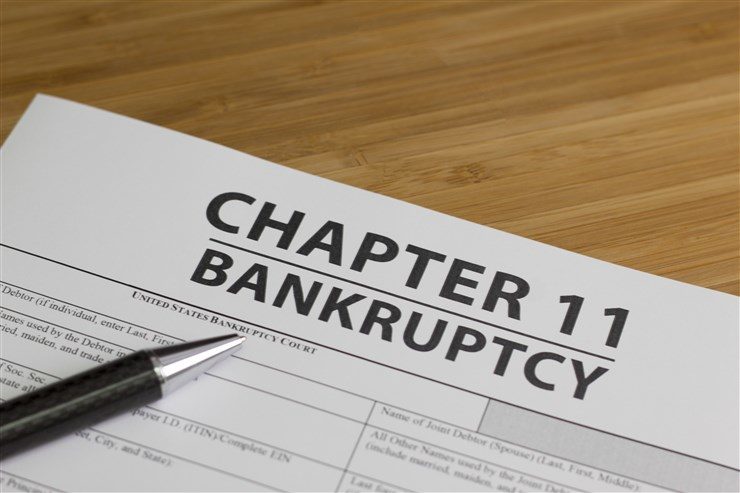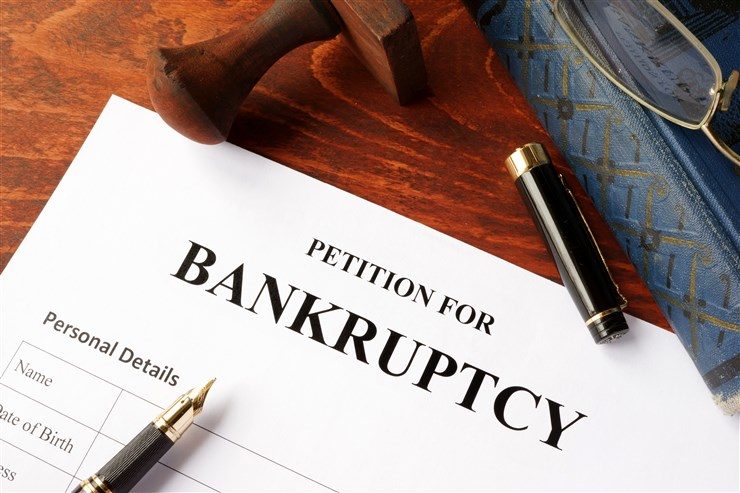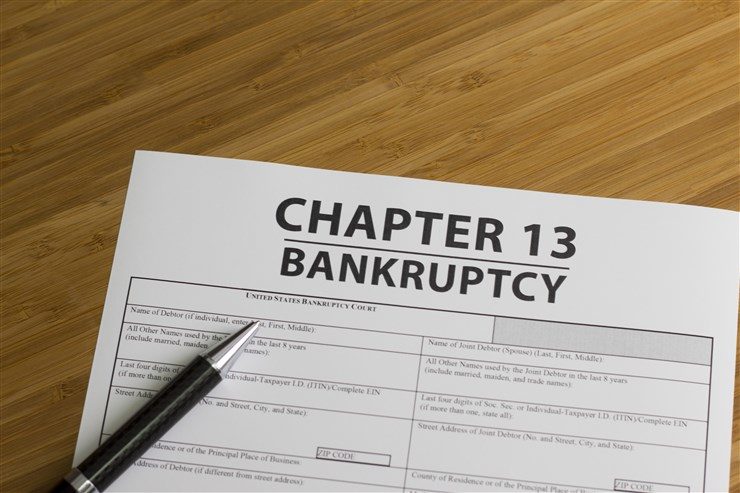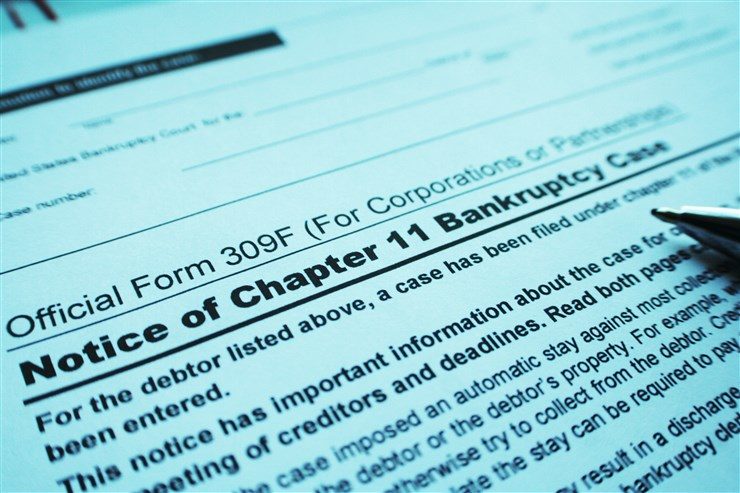BUSINESS BANKRUPTCY
Jennis Morse approaches bankruptcy as an opportunity. For some, it’s an opportunity for a fresh start whereas for others it provides the vehicle to effectuate a complex business transaction. The firm seeks to understand all the circumstances of your business first, and then make recommendations for the best path forward.
These definitions are provided to help clarify the different chapters of bankruptcy that may come up in our discussions.
For more information about what happens when a business files for bankruptcy, contact Jennis Morse to discuss your circumstances.

Chapter 7 Bankruptcy
A Chapter 7 bankruptcy filing involves liquidation — the sale of a debtor’s nonexempt property (i.e., property that isn’t protected) and distributing the proceeds to creditors. It allows a debtor to wipe out most unsecured debt (i.e., debt that has no collateral to back it) and the debtor’s personal liability on secured debt (though the lien will remain against the property itself).
Benefits
In a Chapter 7 case, the debtor is relieved of personal liability for most debts. Part of the debtor’s property may be subject to liens and mortgages that pledge the property to other creditors. Accordingly, potential debtors should carefully examine such exemptions and liens before filing.
Fast Facts
- There is no plan for repayment in a Chapter 7, as there is in a Chapter 13
- You can often keep your house and car in a Chapter 7
- A trustee is appointed who will administer the case and distributions

Chapter 11 Bankruptcy
A Chapter 11 filing — commonly referred to as a “reorganization” — is a form of bankruptcy that involves a restructuring of a debtor’s business affairs, debts, and assets, allowing a business to restructure its finances and maximize the return to creditors and owners.
Benefits
A Chapter 11 bankruptcy can provide debt relief to help a viable business keep the doors open while building a strategy to address issues and emerge solvent. Those filing Chapter 11 bankruptcies are generally seeking a positive resolution to financial issues and hope to retain the business.
Fast Facts
- Unlike other bankruptcy methods, the debtor retains control of the business and continues to run its daily functions (in rarer cases, a Chapter 11 trustee or the equivalent can be appointed if there is mismanagement)
- A Chapter 11 has no limits on the amount of debt, as in Chapter 13
- Chapter 11 is the most complex and flexible of all bankruptcy tools, making it the most expensive to the debtor because of the range of options
- Chapter 11 is typically associated with reorganization but can in fact be a liquidation as well. For instance, imagine a medical practice that needs additional time before it can sell. Were it to file a Chapter 7 with a trustee appointed who “turns off the lights,” that would be disastrous from a patient management standpoint. A liquidating Chapter 11 would allow the practice to continue treating its patients while working towards a more structured conclusion.

Subchapter V of Chapter 11 Bankruptcy
The Small Business Reorganization Act (SBRA) added the new Subchapter V of Chapter 11 within the Bankruptcy Code. This type of filing — commonly referred to as a Subchapter V, or “fast pass” — originally permitted certain individuals and businesses with commercial debts of less than $2,725,625 to file a streamlined bankruptcy case that will typically be faster and cheaper than a standard Chapter 11. The Coronavirus Aid, Relief and Economic Security Act (CARES Act) of March 27, 2020, increased that limit to $7.5 million. Subchapter V bankruptcy filings have only been available just over a year, but already represent a significant amount of new bankruptcy cases.
Benefits
Before the SBRA, struggling businesses considering bankruptcy had only two options: Chapter 7 or Chapter 11. Subchapter V features one-step confirmation and was intended to be more accessible for small businesses than a standard Chapter 11. Much like a Chapter 13 case for individuals with regular monthly income, Subchapter V allows a debtor to spread debt over three to five years, during which time the debtor must pay creditors with its disposable income. The single biggest difference between a Subchapter V case and a traditional Chapter 11 case is the waiving of the absolute priority rule, which decides the order plan payments are made in the reorganization process. It also eases some of the confirmation burdens, appointed a Subchapter V Trustee as an intermediary between the debtor and its creditors, and, does not require a debtor to pay quarterly United States Trustee’s fees.
Fast Facts
- Through the first year of its existence, Subchapter V bankruptcies constituted about twenty percent of all Chapter 11 filings. The Middle District of Florida led the nation in the number of Subchapter V claims filed.
- In a typical Chapter 11, creditors can file competing plans after the debtor’s period of exclusivity expires, but a debtor filing a Subchapter V has the exclusive right to file a plan of reorganization and must do so within 90 days (as opposed to the 300-day plan filing requirement of a standard Chapter 11)
- A Subchapter V debtor can pay administrative expenses over the life of the plan if confirmed under 1191(b), as opposed to a traditional Chapter 11, in which they must be paid in full by the plan’s effective date

Chapter 13 Bankruptcy
A Chapter 13 bankruptcy is often referred to as a “wage earner’s plan.” It allows individuals with dependable income to create a plan to repay all or part of their debts, in installments made over three to five years. During this time, creditors are forbidden from starting or continuing collection efforts.
Benefits
Chapter 13 allows you to keep the property on which you’re making payments. However, all “disposable” income (i.e., what’s left over after necessities like food, shelter, medical care, etc.) must be used to pay down the debt. A Chapter 13 requires credit counseling from an approved agency, with the benefit that you will emerge with better financial management skills.
Fast Facts
- Chapter 13 filers can keep their home and car even if behind on payments or in foreclosure
- Bankruptcy won’t relieve certain debt obligations – examples include student loans, alimony, and child support
- A Chapter 13 bankruptcy can be converted to a Chapter 7 later if warranted

Notice of Bankruptcy
A notice of bankruptcy is an alert that a debtor — a person or institution that owes a sum of money — has filed bankruptcy. It means they’ve filed a petition, either to negate the debt or to receive some relief so they can continue doing business. The notice typically is sent to creditors about a week after the debtor files for bankruptcy. The notice must include a case number — which is provided to allow the firm to see the filing documents — as well as other important deadlines and information.
Meeting of Creditors
This is the initial meeting with the company representative or individual to discuss the bankruptcy, at which all parties can ask questions and get information about moving forward. A representative of the debtor is required to appear, but some creditors choose not to appear at these meetings. The meeting is run by the Chapter 7 trustee in a Chapter 7 case and the United States Trustee in a Chapter 11 case (with the participation of the Subchapter V Trustee in a sub v case).
Proof of Claim
Depending on the type of case filed, the creditor will need to file a “proof of claim,” which is required by all creditors, to get paid. This will include documentation of how much the creditor is owed. A bankruptcy trustee or plan will then determine how much to pay the creditor.
Bankruptcy Trustee
Bankruptcy trustees evaluate and make recommendations about various debtor demands in accordance with the U.S. Bankruptcy Code. They are appointed by an officer of the Department of Justice to represent a debtor’s estate in a proceeding. There can be a Chapter 7, 11 and 13 Trustee appointed.
Whether you are looking for a small business bankruptcy attorney, or a large commercial bankruptcy attorney, the team at Jennis Morse can walk you through the process to achieve the best resolution possible.
